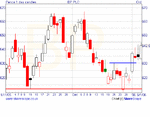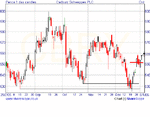Chorlton
Established member
- Messages
- 693
- Likes
- 48
Hello All & firstly, a belated Happy New Year to everyone at T2W.
The reason for my post is that I would be interested from investors / traders what methods are being used to swing / position trade UK shares in a profitable way.
Obviously, the specifics of any trading plan are probably private but I would be interested what general methods are being used.
By menthods I mean whether fundamentals or TA are used and to what degree each type of analysis is used?
ie. Do investors/ traders (i) only use TA to generate Buy & Sell signals, (ii) only have a specific % of a trading plan dedicated to TA while the rest is company fundamentals, (iii) purely use Company Fundamentals with just a small % of TA to general entry & exit point (such as the CANSLIM method) or (iv) something else entirely.
I ask because I have been trying to construct a trading plan which relies almost 85-100% on TA. However, as you can probably guess from this post, my success has been less than favourable & after having some consistant losses, I am now not sure whether this is a good strategy!!!
Any advice would be gratefully received ....
Regards,
Chorlton
The reason for my post is that I would be interested from investors / traders what methods are being used to swing / position trade UK shares in a profitable way.
Obviously, the specifics of any trading plan are probably private but I would be interested what general methods are being used.
By menthods I mean whether fundamentals or TA are used and to what degree each type of analysis is used?
ie. Do investors/ traders (i) only use TA to generate Buy & Sell signals, (ii) only have a specific % of a trading plan dedicated to TA while the rest is company fundamentals, (iii) purely use Company Fundamentals with just a small % of TA to general entry & exit point (such as the CANSLIM method) or (iv) something else entirely.
I ask because I have been trying to construct a trading plan which relies almost 85-100% on TA. However, as you can probably guess from this post, my success has been less than favourable & after having some consistant losses, I am now not sure whether this is a good strategy!!!
Any advice would be gratefully received ....
Regards,
Chorlton


